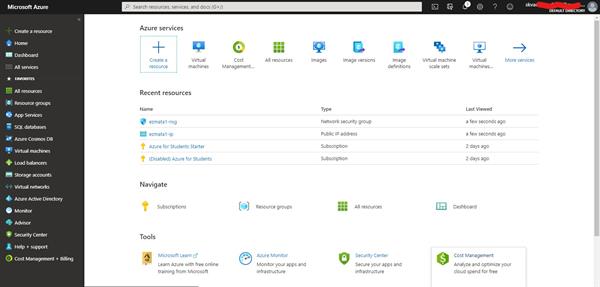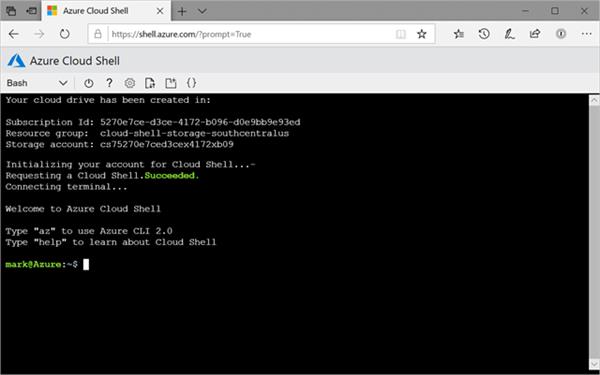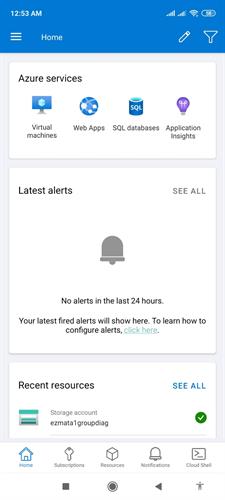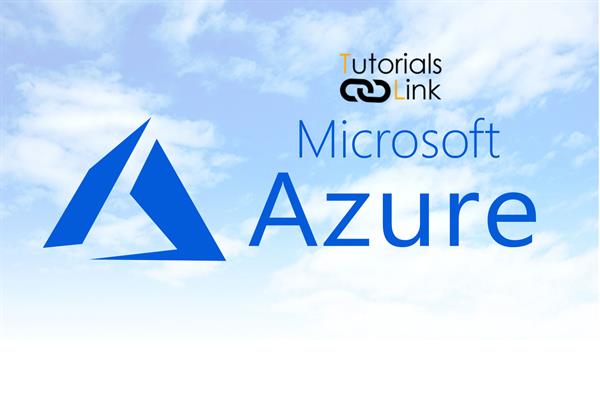Azure management options
You can configure and manage Azure employing a broad range of tools and platforms. There are tools available for the instruction, language-specific Software Development Kits (SDKs), developer tools, tools for migration, and lots of others.
Tools that are commonly used for day-to-day management and interaction include:
- Azure portal for interacting with Azure via a Graphical interface (GUI)
- Azure PowerShell and Azure Command-Line Interface (CLI) for instruction and automation-based interactions with Azure
- Azure Cloud Shell for a web-based command-line(CMD) interface
- Azure mobile app for monitoring and managing your resources from your mobile device
Azure portal
The Azure portal may be a public website that you simply can access with any browser. Once you check-in together with your Azure account, you'll create, manage, and monitor any available Azure services. you'll identify a service you are looking for, get links for assistance on a subject, and deploy, manage, and delete resources. It also guides you thru complex administrative tasks using wizards and tooltips.

A Dashboard view provides high-level details about the Azure environment. you'll customize the dashboard by moving and resizing tiles, and displaying services you're curious about.
The portal doesn't provide any thanks to automating repetitive tasks. for instance, to line up multiple VMs, you'd got to create them one at a time by completing the wizard for every VM. This process makes the portal approach time-consuming and error-prone for complex tasks.
Azure PowerShell
Azure PowerShell may be a module that you simply can install for Windows PowerShell or PowerShell Core, which may be a cross-platform version of PowerShell that runs on Windows, Linux, or macOS. Azure PowerShell enables you to attach to your Azure subscription and manage resources. Windows PowerShell and PowerShell Core provide services like the shell window and command parsing. Azure PowerShell then adds the Azure-specific commands.
Example:- Azure PowerShell provides the New-AzVM command that makes a virtual machine for you inside your Azure subscription. To use it, you'd launch PowerShell, install the Azure PowerShell module, check in to your Azure account using the command Connect-account, then issue a command such as:
New-AzVM `
-ResourceGroupName "MyResourceGroup" `
-Name "TestVm" `
-Image "UbuntuLTS" `
...Creating administration scripts and using automation tools may be a powerful thanks to optimizing your workflow. you'll automate repetitive tasks. Once a script is verified, it runs consistently, which may reduce errors. Another scripting environment is that the Azure CLI.
Azure CLI
Azure CLI may be a cross-platform command-line program that connects to Azure and executes administrative commands on Azure resources. Cross-platform means it are often run on Windows, Linux, or macOS. for instance, to make a VM, you'd open a prompt window, check in to Azure using the command az login, create a resource group, then use a command such as:
az VM create \
--resource-group MyResourceGroup \
--name TestVm \
--image UbuntuLTS \
--generate-ssh-keys \
...Azure Cloud Shell
Azure Cloud Shell is an interactive, authenticated, browser-accessible shell for managing Azure resources. It provides the pliability of selecting the shell experience that most accurately fits the way you're employed, either Bash or PowerShell.

You can switch between the 2 shells, and both support the Azure CLI and Azure PowerShell module. Bash defaults to the Azure CLI (with the az command pre-installed), but you'll switch to PowerShell Core within Linux by typing push. The PowerShell environment has both CLI tools pre-installed. additionally, to those administrative tools, the Cloud Shell features a suite of developer tools, text editors, and other tools available, including:
Developer Tools
- .NET Core
- Python
- Java
- js
- Go
Editors
- code (Cloud Shell Editor)
- vim
- nano
- emacs
Other tools
- git
- maven
- make
- npm
You can create, build, and deploy apps right from this browser-based environment. It's all persistent also - you're prompted to make an Azure Storage Account once you access the Azure Cloud Shell. This cargo area is employed as your $HOME folder and any scripts or data you place here is kept across sessions. Each subscription features a unique storage account related to it, so you'll keep the info and tools you would like specific to every account you manage.
We'll use the Cloud Shell in Microsoft Learn for several of the interactive exercises to undertake out Azure features.
Azure mobile app

The Microsoft Azure mobile app allows you to access, manage, and monitor all of your Azure accounts and resources from your iOS or Android phone or tablet. Once installed, you can:
- Check the present status and important metrics of your services
- Stay informed with notifications and alerts about important health issues
- Quickly diagnose and fix issues anytime, anywhere
- Review the newest Azure alerts
- Start, restart and stop virtual machines or web apps
- hook up with your virtual machines
- Manage permissions with role-based access control (RBAC)
- Use the Azure Cloud Shell to run saved scripts or perform unplanned administrative tasks
Other options
There also are Azure SDKs for a variety of languages and frameworks, and REST APIs that you simply can use to manage and control Azure resources programmatically. For a full list of tools available, see the Downloads page.
When starting with Azure, you'll most frequently use the Azure portal. Let's take a better check out the portal approach.





